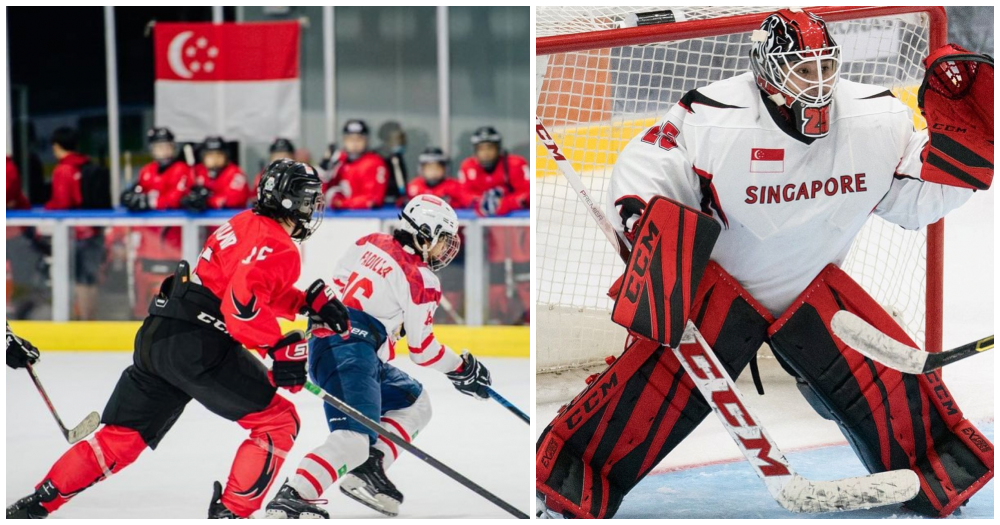I found out a couple of weeks ago that the National Men’s ice hockey team only trains late at night at the ice rink in JCube, just before the confirmation that the mall will soon be redeveloped into a 40-storey residential development.
JCube houses the only Olympic-size rink in Singapore, and training time on the ice is highly sought after by not only ice hockey players but speed skaters, figure skaters, and other winter sports players.
When I met National team players Ryan Tan and Daniel Chew who spoke to me about the ice hockey scene here and let me take a look at their training, I asked if I could join in as well.
I wasn’t sure if they’d say yes, given how precious time on the ice can be, and the fact that they are in the midst of preparing for the International Ice Hockey Federation (IIHF) World Championship Division III in Bosnia in March.
Surprisingly, they agreed, and suffice to say, I was hyped.
The sport – from my outsider's pair of eyes – called for two skills: using a hockey stick and ice skating.
Lucky for me, I took inline skating and played floorball from a young age – which use similar manoeuvres and equipment, and which some of the national players have picked up so they can train for ice hockey outside the rink.
So, surely I would be playing ice hockey with no problems, right?
Yet, I quickly discovered - after warming up in the low single-digit temperature at the team’s training ground - translating the skills from one sport to the other was not an easy task and I felt like a complete fool after almost an hour on the ice.
With The Rink at JCube ceasing operations come August, what will the ice hockey scene do to upkeep their skills without a rink?
Going into ice hockey
Though it was some distance away in a function room, I could still feel the cold air from the rink, while I was speaking to Tan and Chew.
The team’s development director, Joewe Lam, noticed me underdressed - in my t-shirt and cargo pants - and passed me a team jersey to put on.
“You’re going to feel cold if you’re dressed like that,” he said to me before I made my way toward the ice.
In contrast to my very casual outfit, the players wore thick hoodies and track pants; useful as protection when they fall and to keep themselves warm.
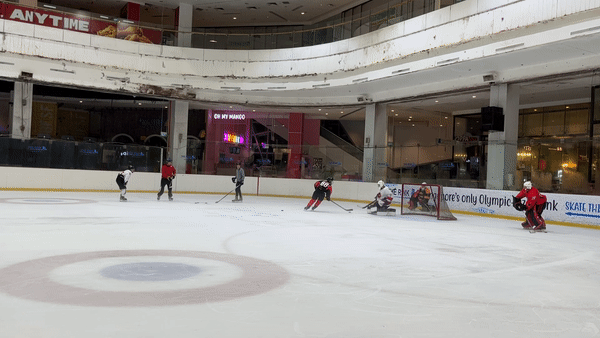
Like its name suggests, ice hockey is a winter sport, popular in cold countries like Canada, Finland and Russia, where they see sub-zero temperatures for large portions of the year.
Understandably, far away, in a tropical country like ours, ice hockey wouldn’t be a top pick, said 24-year-old Tan.
He’d been playing the sport since he was just eight years old as a result of a retail gaffe. His parents, looking for figure skates, had mistakenly bought ice hockey skates and they decided he could try that instead.
Since there weren’t any family or friends who were playing, they had to search for ice hockey lessons online, managing to find the only kids' programme, which was called the Singapore Ice Dragons.
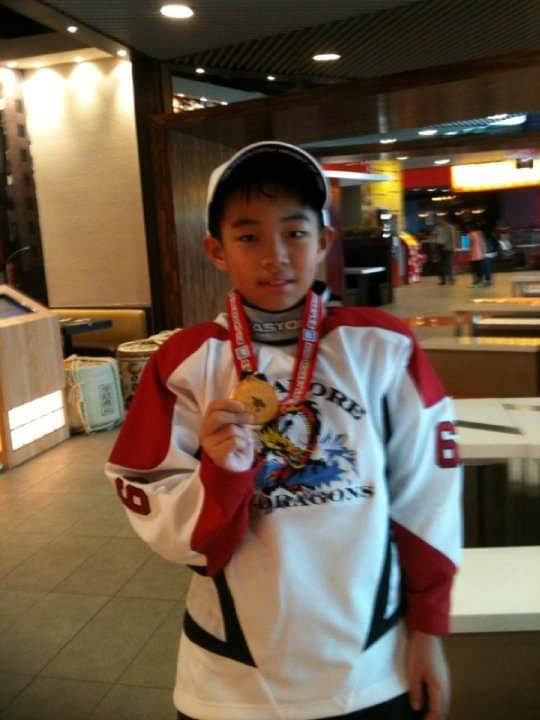 Image via Ryan Tan.
Image via Ryan Tan.
He found that he enjoyed playing, and gradually gained experience, playing for kids’ leagues, youth teams, and now, the national team.
47-year-old Chew, on the other hand, picked up the sport through casual Friday night matches with a couple of pals; learning the intricacies of how teams would shoot, dribble and position themselves in a game from YouTube videos.
His obsession started after a friend asked him if he wanted to play a game of ice hockey when he was 20.
“As long as you can skate can already,” his friend said to him; Chew knew how to inline skate and had played field hockey since he was 15.
Pulling together self-taught players like Chew and players like Tan who had taken consistent lessons when starting out, the sport’s local scene has grown and developed steadily over the years.
Yet, after two decades of playing, Chew’s impression is that many Singaporeans still don’t know of the existence of the TeamSG ice hockey squad.
No one joining the sport
When Tan first joined the Singapore Ice Dragons, he was surrounded by expatriate kids who eventually left the country to pursue their studies and careers elsewhere.
“So you have now a handful of guys in their mid-to late-30s and 40s. There is no one in their mid-20s. And then we have a team of under 20s,” he said, giving me an idea of the age gap between different generations of local players.
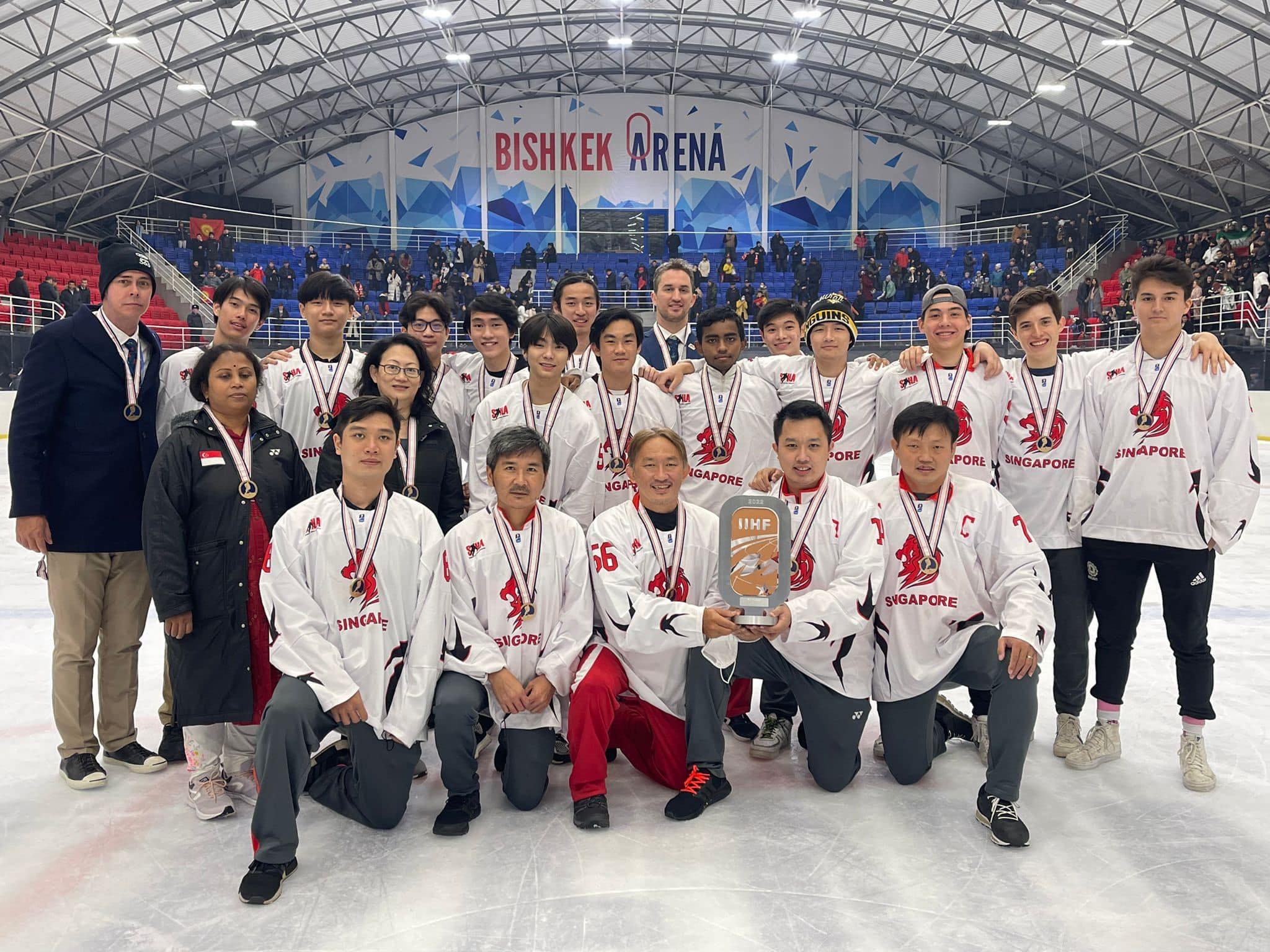 Image via Singapore Ice Hockey Association.
Image via Singapore Ice Hockey Association.
Looking around, Tan pointed to another teammate who was seated at the back of the room. At the age of 18, Chew is 23 years older than he is, Tan said, to emphasise his point.
It is a given that ice hockey isn’t as well-known as other sports, in part because it’s not a co-curricular activity (CCA) choice in schools.
Tan recalled juggling school work with his floorball CCA in school and the lack of sleep from having to commit to ice hockey trainings in the late hours of the night.
Parents’ support is key
Still, Tan had the benefit of support from his parents.
“My dad (has) never seen me play,” Chew said, offering his experience for contrast.
“Nowadays more parents support their kids playing ice hockey compared to our era, [where] you don’t see any parents supporting their kids.”
He shared that on top of showing up for their kids, they also help to cover the cost of training.
Beyond the gear, which can cost hundreds of dollars, each player from the national team pays about S$20 an hour for the rink and S$40 for a two-hour training session.
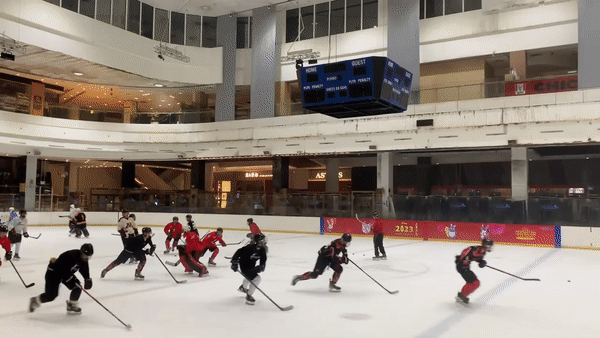
Newer, younger players needed their parents’ support to allow them to train on top of their already-busy school schedules — another reason why parents play such a big role in the sport’s development, Chew said.
Chew and his teammates have been bringing their own kids into the scene, building a new generation; his eight-year-old son has been playing for three years now.
But with more players, more teams, and hopefully more competitions in the future, finding space for everyone becomes harder.
Not enough venues to train in
Unlike finding a venue for a game of football, badminton, basketball, and tennis, ice rinks are scarce in Singapore.
Currently, there are only two ice rinks located in Kallang Leisure Park and JCube.
However, The Rink at JCube, which opened in 2012, is the sole Olympic size rink which is suitable for the team to train on right now.
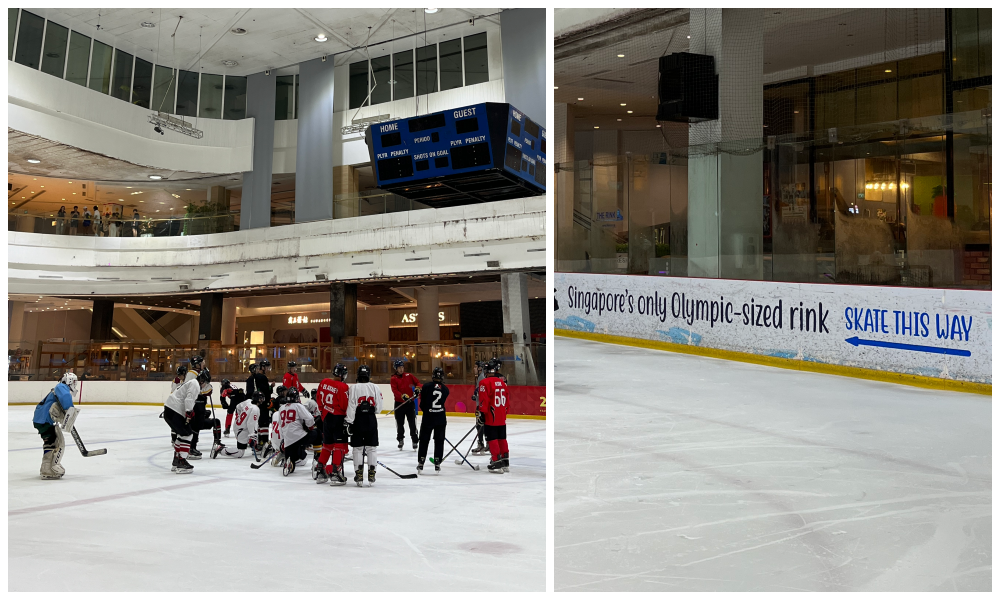
Unfortunately, they have to compete for the ice rink with other winter sports that need the rink.
Because of the limited slots, the National men’s team only trains together once a week, starting close to 10 pm, after The Rink closes. Some may get more time on the ice if they are also part of an ice hockey club that has its own training slots.
Having such little time on the ice is a real constraint for the team, especially as they progress toward international tournaments and set their sights beyond Asia.
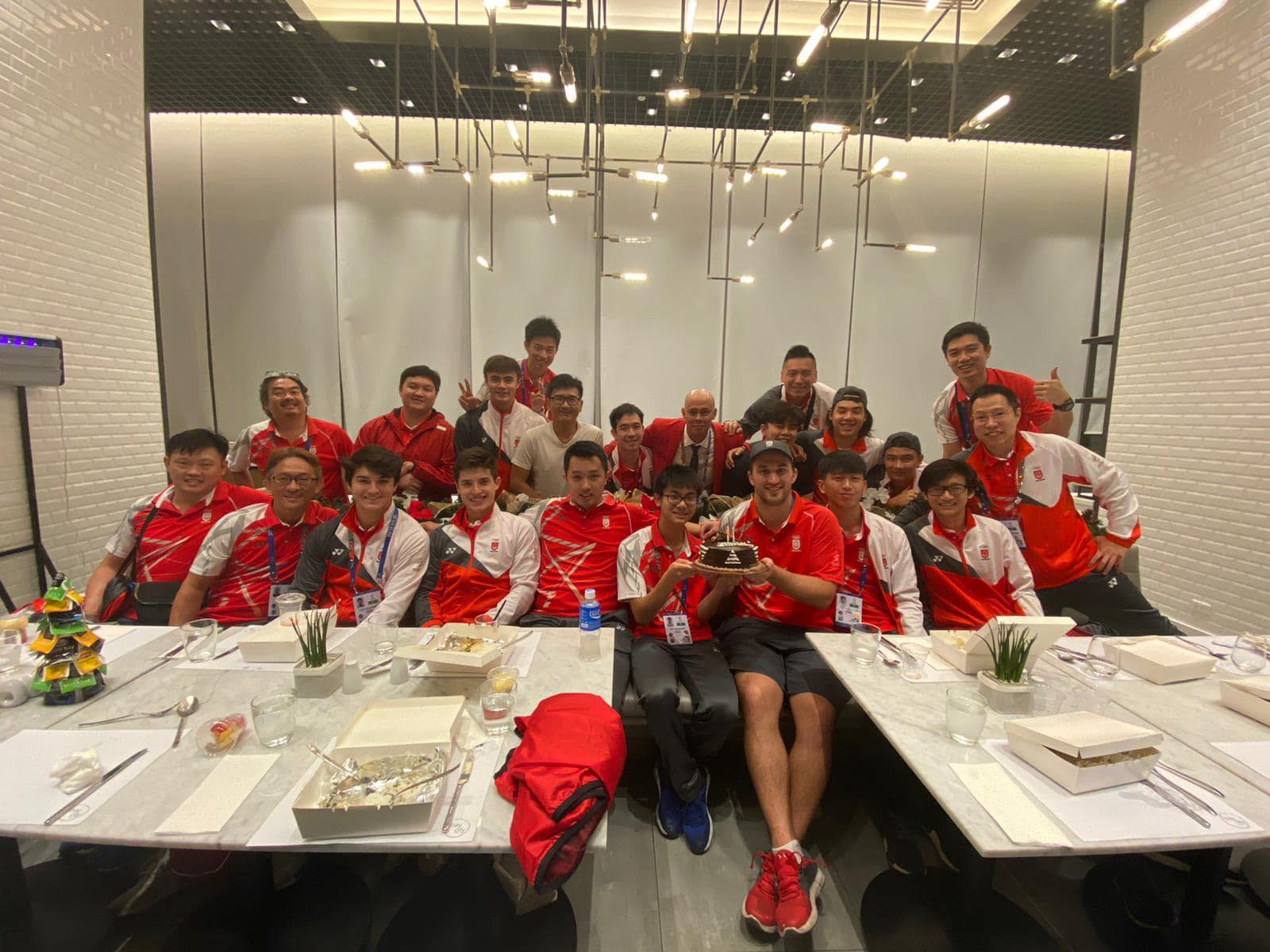 Image via Singapore Ice Hockey Association.
Image via Singapore Ice Hockey Association.
To compensate, the team work on their skills by practising alternative sports.
For example, speed and cardio can be trained on inline skates.
To practice their stickwork, many players also take up field hockey or floorball in school, Tan shares with me.
He played floorball himself in secondary school and junior college.
But there are limits to how much one can train for ice hockey without actually playing ice hockey
Tan cited the example of stopping, which tends to be gentler on inline skates compared to ice hockey where players need to make an immediate hard stop by leaning back and cutting the ice beneath their skates.
“It’s not easy, as a beginner, to translate [skills] from inline [skating] to ice hockey,” Chew said.
And committing to this “cross training” requires “a lot of discipline”, he added.
It’s going to be something they need as they face what is probably their biggest hit – losing their main training ground.
Understanding cross-training
After our chat, I headed to the rink to test the ice, fairly confident that I could pick it up.
Embarrassingly, it took a while before I felt comfortable on the ice. After a few stumbles here and there, I managed to use some of what I knew from inline skating to move around.
As I got the hang of it, Chew advised me to tilt my ankles inward as I skated (a very helpful tip).
I skated stiffly up and down the ice, back straight and with my arms out, ready to break a fall.
But even as my body warmed up, I still couldn’t focus on much more than staying on my two feet
After a while, I decided it was time to pick up a stick and tried tapping the puck from left to right. Again, it wasn’t as easy as I thought it would be.
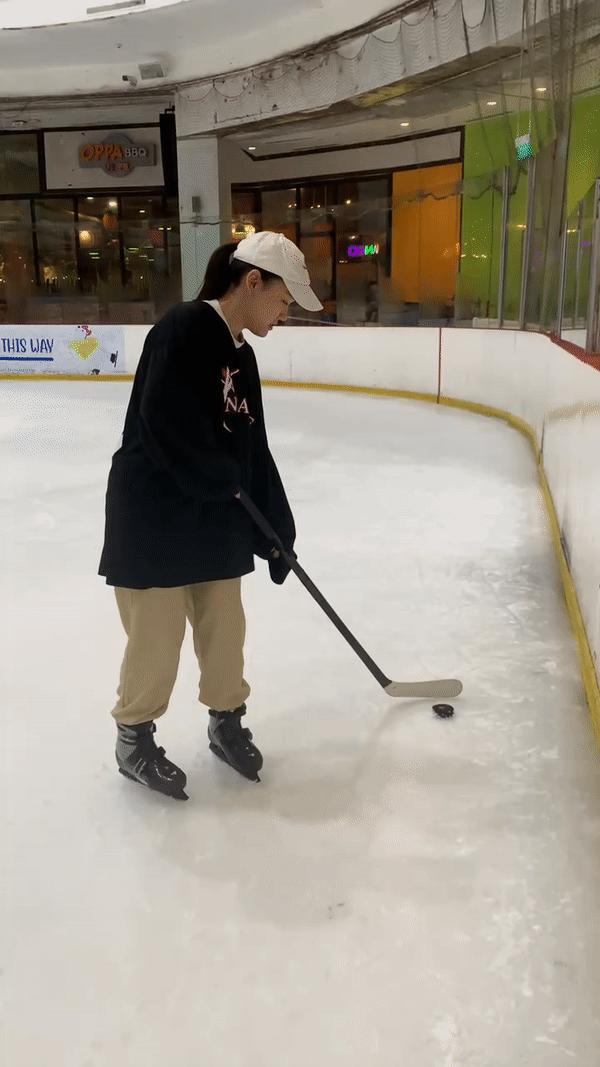
It was hard to draw my focus from my arms and feet as I precariously mirrored what the players were doing; even with my related experience in floorball, I couldn’t fully translate it on the rink.
After a tiring hour, I went home and searched online to find that “roller hockey is probably the most effective off-ice cross-training tool for players to keep their leg, hip, and groin muscles in shape”, according to ice hockey players.
Even Connor McDavid, captain of the Edmonton Oilers, a professional ice hockey team in the National Hockey League, credits his roller hockey skills for blowing past opponents on the ice.
What the time on the rink made me realise was how players like Tan and Chew not only had to master ice hockey but cross-training activities as well — the only way they can mimic and hence train certain movements and game plays off the ice.
Surviving with no training ground
It seems that the main struggle the ice hockey team faces is the lack of training space.
The players are quite aware that they’re unlikely to get more training time. It’d be too much to request more slots from the management of The Rink, which would have to take those slots away from other paying customers.
Anyway, asking for more training time will be moot come August, when JCube is set to close to make room for a new residential development.
They’re not in a position right now to fund a rink of their own, especially since players already pay for their training, gear and flights to overseas competitions. The national association is even looking for donations through giving.sg to fund its “High Performance Programme”.
So they’re hoping to find another ice rink before JCube closes, and are looking at off-ice training to prepare themselves for any upcoming regional tournaments, Lam shared.
“The plan is the same to stay focused and train as much as we can.”
“We will surely plan to go regionally to train as well,” he added.
Still, this less-optimal training situation will make it harder to recruit new players, dampening their hopes to see the scene grow.
Despite that, these players are set on overcoming the challenges of playing ice hockey in Singapore.
Against these improbable odds, I could not help but wonder why they’d continue to pursue the sport here.
But looking back, they’ve come a long way from casual games of the 1990s, to the formation of local teams that competed among themselves in the 2000s, to today, where they now have programmes to train new players.
They’ve also gone from having just a few local kids joining in, to being able to recruit, train, and send full squads of U15 and U17 teams to international competitions like the South East Asia Youth Cup over the last five years.
The junior teams have even returned with medals from their overseas excursions.
This small community now has a lot of support from within.
Chew points out that their coach, who is also the father of one of the players, is volunteering his time for no pay.
Building from the ground up for over 20 years, the national team has since made itself known on the international scene, first appearing as a team in the IIHF Challenge Cup of Asia in 2008.
And last year, they went beyond Asia and competed in the IIHF World Championships Division III. They will return to compete there again, this March.
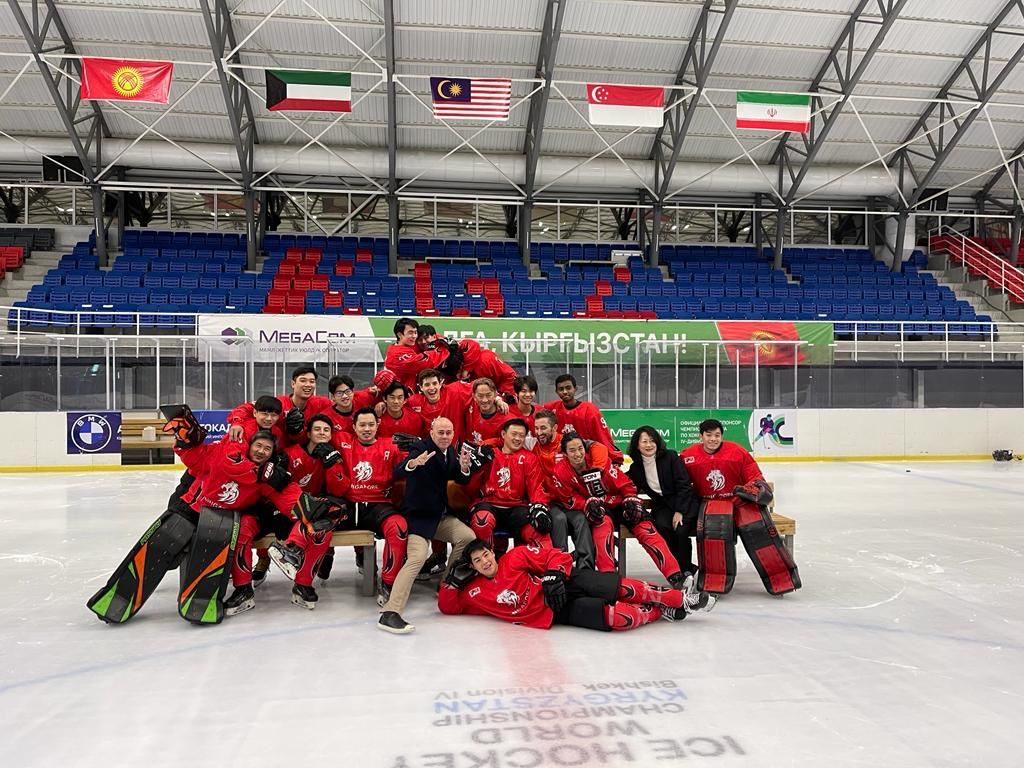
After all, the list of accomplishments they’ve accumulated over the years came from playing once a week at late and odd hours in the rink, and placing their trust in cross-training off the ice to condition themselves when they’re back in their ice skates.
Against all odds, the sport of ice hockey, miles away from the climes with cold winds and piercing temperatures where it has natural popularity, has found its own supporters here – from the players and their families to mall patrons gazing over the rink, and now, me.
Top images via goaligram and Singapore Hockey/IG.
If you like what you read, follow us on Facebook, Instagram, Twitter and Telegram to get the latest updates.
